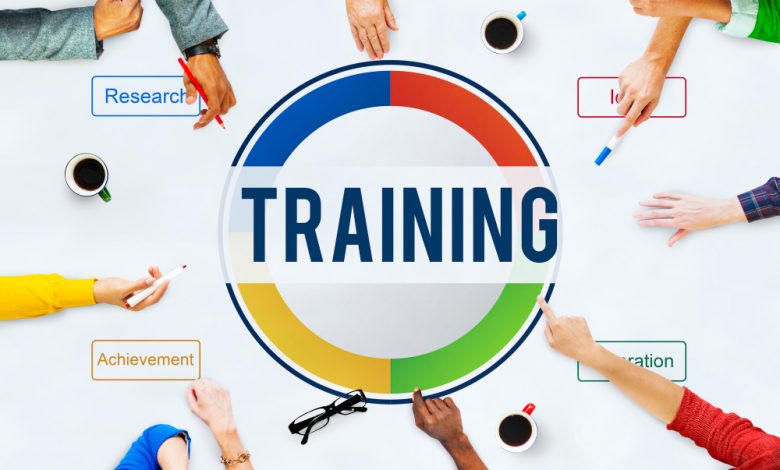Maximizing the Impact of Training Initiatives: Key Principles for Successful Employee Development

Employee development is a critical aspect of organizational success, and training initiatives play a pivotal role in enhancing the knowledge, skills, and abilities of the workforce. However, to ensure that training initiatives deliver maximum impact and value to both employees and the organization, it is essential to adhere to key principles of successful employee development. In this article, we will explore these principles and provide insights into how organizations can effectively maximize the impact of their training initiatives.
Understanding the Importance of Employee Development
Before delving into the key principles of successful employee development, it’s essential to understand why employee development matters. Employee development not only enhances individual capabilities but also contributes to organizational growth and competitiveness. Here are some reasons why investing in employee development is crucial:
Improved Performance: Well-trained employees are better equipped to perform their jobs effectively, leading to improved productivity and performance.
Enhanced Engagement: Investing in employee development demonstrates a commitment to employees’ growth and success, leading to higher levels of engagement and job satisfaction.
Retention and Loyalty: Employees who receive training and development opportunities are more likely to feel valued and stay with the organization for the long term, reducing turnover and associated costs.
Innovation and Adaptability: Continuous learning and development enable employees to adapt to changing market conditions, embrace new technologies, and drive innovation within the organization.
Key Principles for Successful Employee Development
Align Training Initiatives with Organizational Goals
The first principle of successful employee development is to ensure alignment between training initiatives and organizational goals. Training programs should be designed to address specific skill gaps, performance objectives, or strategic priorities identified by the organization. By aligning training initiatives with organizational goals, organizations can ensure that employee development efforts contribute directly to the achievement of business objectives.
Tailor Training Programs to Individual Needs
Every employee is unique, with different strengths, weaknesses, and learning styles. Therefore, it’s essential to tailor training programs to individual needs and preferences as much as possible. Offer a variety of training modalities, such as instructor-led workshops, online courses, self-paced modules, and on-the-job training, to accommodate diverse learning preferences. Providing personalized learning experiences enhances engagement and retention, leading to more effective employee development outcomes.
Foster a Culture of Continuous Learning
Successful employee development requires a culture that values and supports continuous learning and growth. Organizations should foster a culture of learning by encouraging employees to pursue ongoing education, explore new ideas, and share knowledge and best practices with their peers. Provide resources, incentives, and recognition for employees who demonstrate a commitment to continuous learning, such as tuition reimbursement, access to online courses, and opportunities for skill development.
Provide Opportunities for Hands-On Experience
While theoretical knowledge is essential, hands-on experience is equally valuable for employee development. Provide opportunities for employees to apply newly acquired skills and knowledge in real-world situations through projects, simulations, and role-playing exercises. Encourage employees to take on stretch assignments, cross-functional projects, and leadership roles to broaden their experience and enhance their capabilities. Hands-on experience not only reinforces learning but also builds confidence and competence in employees’ abilities.
Foster a Supportive Learning Environment
A supportive learning environment is critical for successful employee development. Create an environment where employees feel comfortable asking questions, seeking feedback, and taking risks without fear of judgment or reprisal. Encourage managers and supervisors to act as mentors and coaches, providing guidance, support, and encouragement to employees as they navigate their development journey. Foster collaboration and teamwork among employees, enabling them to learn from each other’s experiences and expertise.
Measure and Evaluate Training Effectiveness
To ensure that training initiatives are delivering the desired outcomes, organizations must measure and evaluate their effectiveness regularly. Establish clear metrics and key performance indicators (KPIs) to assess the impact of training on employee performance, engagement, and organizational goals. Use a variety of evaluation methods, such as pre- and post-training assessments, surveys, feedback sessions, and performance reviews, to gather data on the effectiveness of training initiatives. Use this data to identify areas for improvement and make informed decisions about future training investments.
Encourage Continuous Feedback and Improvement
Employee development is an ongoing process that requires continuous feedback and improvement. Encourage open communication between employees and managers, allowing for regular feedback on training programs, learning experiences, and performance outcomes. Solicit input from employees on their training needs, preferences, and areas for improvement, and use this feedback to refine and enhance training initiatives over time. Embrace a culture of continuous improvement, where learning and development are viewed as iterative processes that evolve and adapt to changing needs and priorities.
Recognize and Reward Learning Achievements
Finally, recognize and reward employees for their learning achievements and contributions to organizational success. Celebrate milestones, certifications, and accomplishments publicly, demonstrating the organization’s appreciation for employees’ commitment to their development. Offer incentives, bonuses, or career advancement opportunities for employees who demonstrate exceptional growth, proficiency, and leadership in their roles. By recognizing and rewarding learning achievements, organizations reinforce the importance of employee development and inspire a culture of continuous learning and improvement.
Conclusion
Maximizing the impact of training initiatives requires a strategic and holistic approach to employee development, grounded in key principles that promote alignment, customization, continuous learning, hands-on experience, supportive environments, measurement, feedback, and recognition. By adhering to these principles and investing in employee development, organizations can enhance individual capabilities, drive organizational performance, and foster a culture of continuous improvement and innovation. Ultimately, successful employee development is not just about training employees; it’s about empowering them to reach their full potential and contribute meaningfully to the success of the organization.








